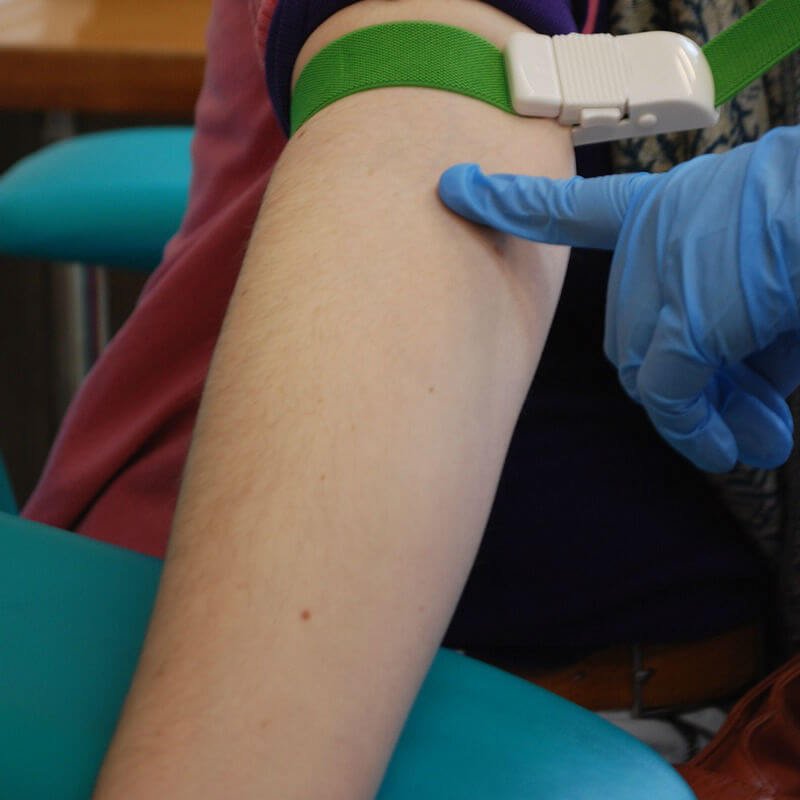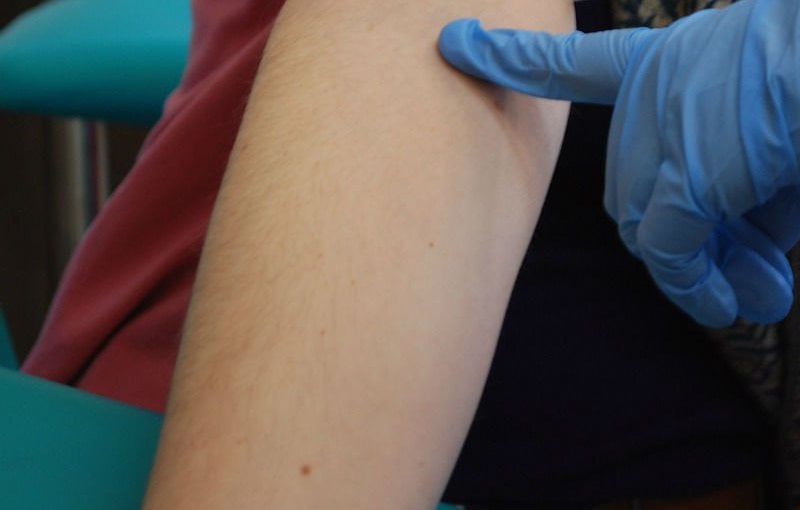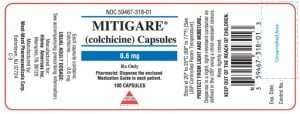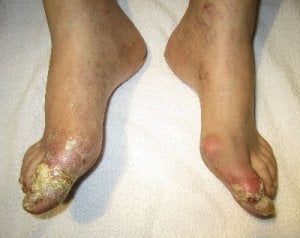The uric acid blood test warns that we are at risk of another acute gout attack.
Gout symptoms but no gout diagnosis? See how a normal uric acid blood test can be unreliable:
Diagnosis Vs Management
Test Reporting Problem
Temporary Decrease
What Next?
References
For more information, please see the Normal Uric Acid Levels guidelines.
This is very reliable for confirmed gout patients, but a source of extreme confusion and frustration for unconfirmed patients with gout symptoms.
What is the purpose of Uric Acid Test?
The purpose of uric acid test is most often to help your doctor manage your uric acid treatment. However, the purpose of your first uric acid test might be to help your doctor diagnose gout.
There is a significant difference in interpreting uric acid blood test results between confirmed and suspected gout cases. For a confirmed gout patient, any number above 7 mg/dL (0.4 mmol/L) is a clear risk of a gout attack. Blood tests for confirmed sufferers should be used as an aid to managing gout. They tell you whether urate lowering therapy is set at the right dosage. This is a fairly simple process. But it does rely on the doctor understanding the need to set the right target uric acid level. Also, it relies on the patient taking the medication daily as directed.
The problems arise when a gout diagnosis is doubtful, and uric acid blood test results are being used to help form a definite diagnosis. There are two fundamental problems with this approach, which I explain below. Gout diagnosis from blood tests is possible. But it needs a clear understanding of the gout process. Preferably bolstered by more tests on a weekly basis.
We know that uric acid crystals can form in joints at normal temperatures with a uric acid concentration of slightly under 7 mg/dL[1]. For confirmed gout patients, it is almost certain that uric acid will form crystals at that level. For unconfirmed gout patients, there is a strong probability that it will cause a gout attack, but this is not certain.
What does a Uric Acid Test tell you?
After drawing a blood sample, your doctor sends this for analysis at a laboratory. Each lab has different procedures. But invariably their report will tell you the actual test number. Plus an assessment of high, low, or normal.
Normal is dangerous.
It is not a medical assessment, just a statistical expression of how your results compare to hundreds of other people. This is often referred to as a reference range[2]. But, medically it is fairly meaningless. Who knows the sample to whom you are being compared? Are they undiagnosed gout or hyperuricemia sufferers? Nobody really knows or cares. The lab has simply used some textbook ranges, or done their own sampling and taken a percentage as “normal.”
This is pointless and very misleading. We already know that, medically, anything above 6 mg/dL is not normal. 6 to 7 is risky, and above 7 is dangerous. Comparing the numbers to an average sample is meaningless.
The very fact that they report different ranges for males and females should set alarm bells ringing. Yes, premenopausal females do have a lower likelihood of gout, but this is because physiologically they are likely to have lower uric acid levels – at the same uric acid level, they have the same gout risk.
You really must get the exact number from your uric acid blood test. But even that is not the full story.

Uric Acid Blood Test Temporary Decrease
We measure uric acid in the blood as a way of assessing the risk of uric acid crystals forming. After all, it is the presence of those crystals that causes the gout reaction, not uric acid in the blood. Generally speaking, blood uric acid concentration is a good indicator of uric acid concentration in the joints and tissues, but there is a problem when a gout attack starts.
Gout attacks occur in untreated gout patients when uric acid forms crystals in and around one or more joints. As soon as this happens, uric acid has left the bloodstream to concentrate in the gout attack site. This means that blood uric acid reported in a test at the beginning of a gout attack can be lower than normal. This does not happen every time, but often enough to prevent a definite diagnosis if uric acid levels have temporarily reduced due to the gout attack. The study that first reported this phenomenon [2] has been repeated by two other research groups. The studies clarify that uric acid concentration can rise or fall during a gout attack. Though the groups differ on percentages of patients showing a temporary fall in blood uric acid, they all agree that a single blood test at the time of an acute gout flare renders the test unreliable as a diagnostic.
Uric Acid Blood Test: Next Steps
Now you understand the importance of real numbers, and not a range assessment. So you should always insist that your doctor gives you the exact uric acid test result. Together with the range. This is a number followed by mg/dL or mmol/L. Though occasionally other variations on these scales are used.
If you are told that your symptoms cannot be gout because your uric acid blood test result is normal, just say “No Thanks! I want a proper diagnosis”.
Better still, add your support to the N.U.A.N.T. gout campaign – NUANT – Normal Uric Acid? No Thanks!
Leave Uric Acid Blood Test to browse Normal Uric Acid Levels guidelines.
Uric Acid Blood Test Related Topics
Please remember: to find more related pages that are relevant to you, use the search box near the top of every page.
Common Terms: blood, Most Helpful Gout Pages, result, test, Uric acid in the human body
Other posts that include these terms:
- High Alkaline Foods for Gout Diet Menu
- Gout Foods Table for Vegetables
- Gout Food List for GoutPal Foodies
- Foods High in Uric Acid Chart
- Purine Rich Foods
- Does Alcohol Affect Gout?
- Colchicine For Gout
- What Foods Cause Gout?
- Is Chinese Food Bad For Gout?
- Is Very Low Purine Gout Diet Possible?
Uric Acid Blood Test References
- GoutPal. [Internet] [Cited 29th March 2010] Uric Acid Concentration
- Logan JA, Morrison E, McGill PE. Ann Rheum Dis. 1997 Nov;56(11):696-7. Serum uric acid in acute gout. Serum Uric Acid In Acute Gout
- Keith C Taylor. “Uric Acid Reference Range for Blood“. GoutPal 2017.
Please give your feedback
Did this page help you? If yes, please consider a small donation. Your donations help keep GoutPal's gout support services free for everyone.
If not, please tell me how I can improve it to help you more.
- YouTube
- The gout forums.











